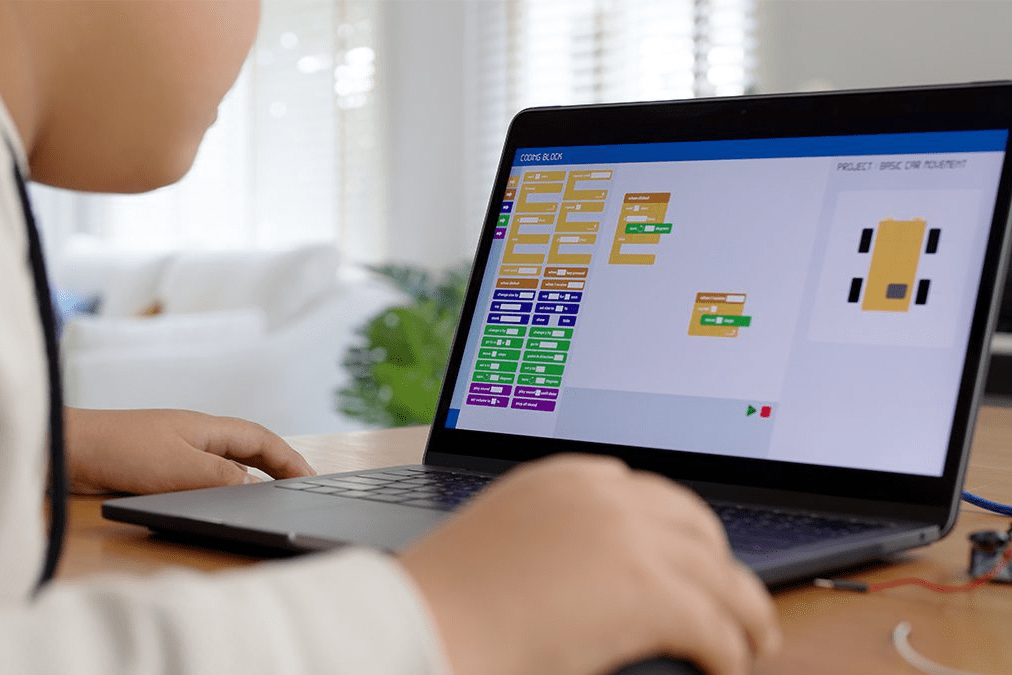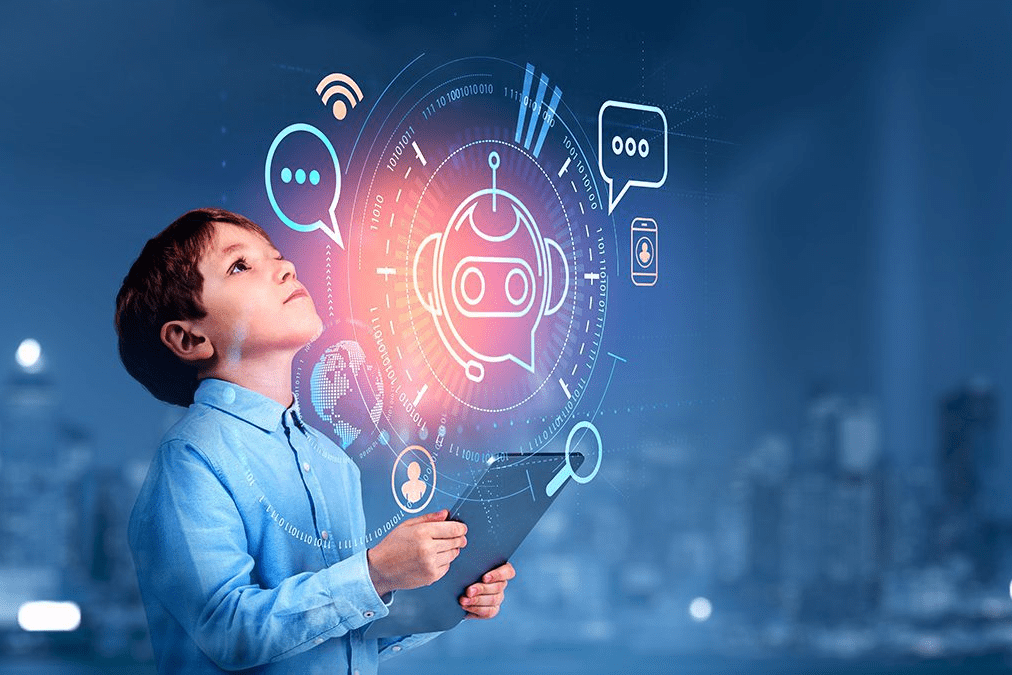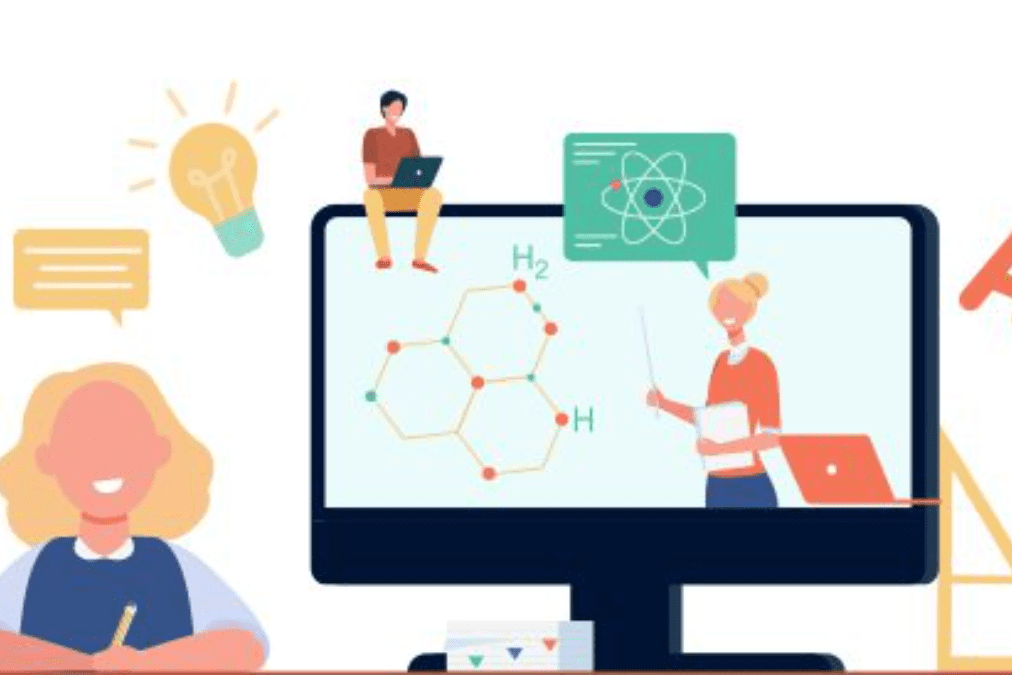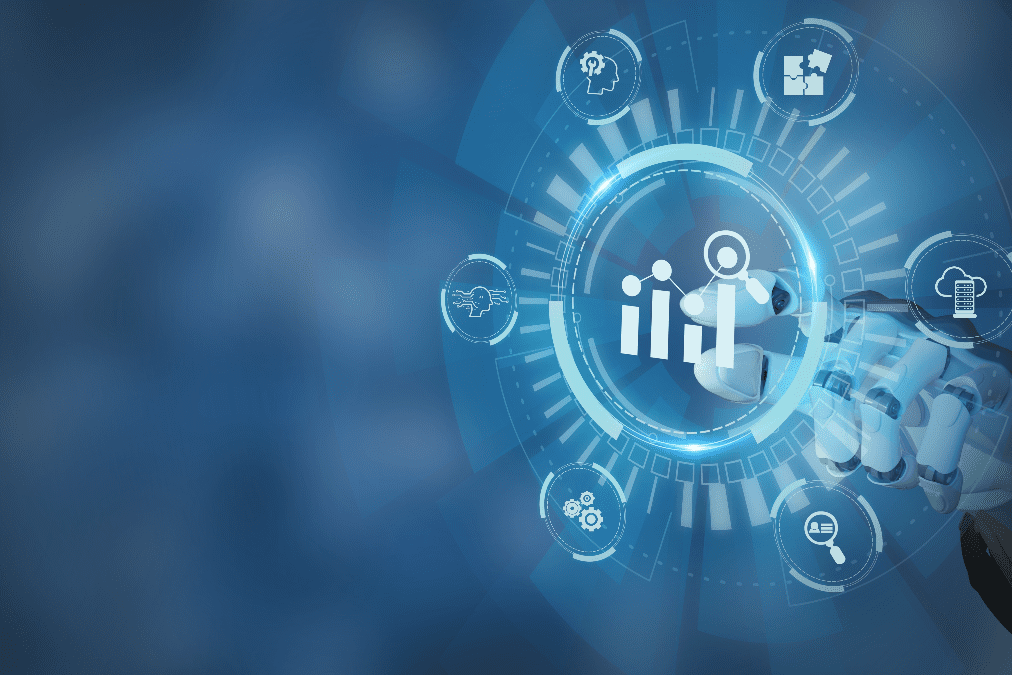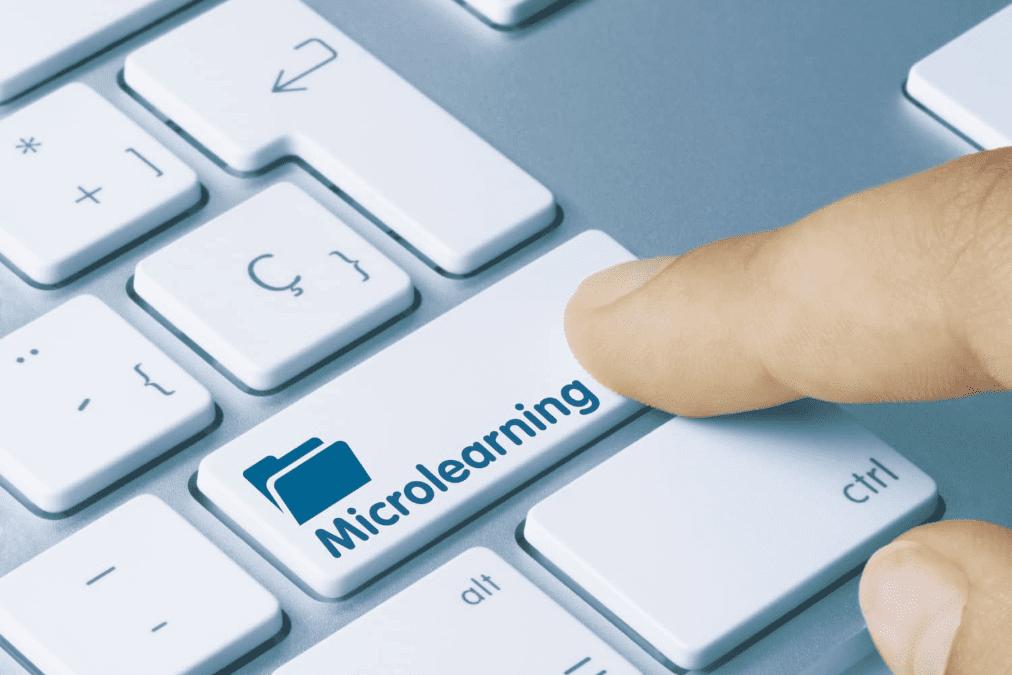Introduction
Linear career ladders of ‘learn, work and retire’ are part of a bygone era. Nations and businesses are currently facing geo-political, technological, social, economic and environmental changes all at the same time. In this milieu, organizations that do not foster a culture of continuous learning to overcome skill shortage will be left behind. Organizations must give skill development its due importance in order to capitalize on opportunities, stay competitive and future-proof their businesses.
As large scale job changes continue to occur across industrial sectors, future employment will mostly be skill and competency-based, and not solely dependent on academic knowledge. Amidst the impending talent shortage, businesses will have no option but to adopt workplace learning to bridge the skills gap. With automation making older job roles redundant, newer roles with intrinsic digital savviness are being developed that require a workforce that possess digital and other skills, along with core domain skills.
“eLearning shortens the pathway to skill building and is vital for a talent continuum for business 4.0 and industry 4.0 in the new economy.”
In the last couple of years, corporate L&D departments in large enterprises have managed to scale their key success factors in training. These companies are now using eLearning systems to benefit a wider employee reach than previously supported. More than 40% of Fortune 500 companies have, in fact, been using eLearning systems. IBM for example has gained sizeable savings estimated at $200 million through its eLearning investment. French retailer Carrefour has found eLearning a valuable solution for its time and mobility challenges. Chocolate maker Godiva’s visually rich
gamification has earned it high ratings from its learners. Small and Medium Enterprises (SMEs) that have switched to eLearning have also found a great way to achieve scalability, agility and democratized learning at a fraction of the cost spent on classroom trainings.
Digital learning solutions find use cases across multi organizational functions like sales, marketing, HR, and requirements like technical and non-technical certifications, technical training, customer success, analytics etc. With hybrid and remote working here to stay, the biggest challenge for L&D professionals is to ensure a productive learning culture. Digital delivery of learning provides consistent and flexible learning experiences, and development opportunities on-the-go for employees, regardless of where and what time they work.
In this article, we give you a preview of significant corporate eLearning trends for 2023 to help you reshape and meet your eLearning goals in the year ahead.
Innovation is the trending buzzword in business. Experiencing the benefits of eLearning solutions, L&D departments in large enterprises will continue to use them to provide lifelong learning opportunities, and to foster innovative thinking across all workforce categories. Small and medium businesses can take a valuable cue from them.
As eLearning solutions evolve to align with business and workforce requirements, let’s explore some common trends that are shaping-up learning and development in 2023, across industries.
Employee-Led Continuous Learning Culture
As the Great Reshuffle slowed and the job market cooled, LinkedIn Learning recorded its audience doubling this year at 7.3 million learners who watched their most popular videos. This is evidence of a growing trend that employees have been acquiring skills not just through formal organizational Learning & Development interventions, but also through micro credentials from MOOCs like edX, Coursera, Udacity and Unacademy. Organizations are beginning to recognize employees who acquire new skills through personal initiatives and are providing them with growth opportunities within the organization. In today’s disruptive environment, organizations can leverage this employee-led learning trend to improve business performance.
Blended Learning – The emerging go-to-choice strategy
The benefits of blended learning are manifold. It is highly flexible as it uses a variety of instructional delivery methods, improves learner engagement and retention rates, suits best for designing impactful learning pathways tailored to specific needs – more so in breaking down complex requirements to manageable training/learning blocks, and lastly improves ROI on training investments by reducing the total cost of training.
Due to its modular framework any part of the training journey can be adapted or modified to meet evolving needs. Blended learning strategy also helps organizations with limited L&D budgets. Organizations of all sizes and industries are benefitting from this highly productive strategy and this methodology is poised to become the go-to-choice for L&D teams.
Microlearning – Moving from Learning to Mastering
Two key factors to consider while structuring corporate eLearning modules are: 1.The attention time span, and 2. The time for internalizing learning. Learning nuggets with shorter durations and more learning segments ensure sustained learner interest and greater in-depth learning. L&D teams have found this to be an effective strategy to reinforce learning, and to enhance job performance. Organizations across industries use microlearning as an effective workforce performance strategy. Also, as microlearning helps L&D teams to get more done in less time, this strategy helps organizations respond quickly to disruptive changes by greatly reducing time-to-competency of their workforce in acquiring new skills.
Learning with Active Practice through Experiential Learning Strategies
Experiential learning strategies have always had direct and immediate impact in learning and knowledge retention. Emerging technologies like Augmented Reality (AR), Virtual Reality (VR), Mixed Reality (MR) and first-person game engines provide the right platform for transformative learning experiences. A more recent breakthrough is the ‘Metaverse’ that is finding transformative use cases among businesses, including training. By placing the learner at the center of learning and the participatory experiences, all these technologies foster improved learning efficacy. Immersive training strategies that use emerging technologies leverage many of the adult learning principles such as: learning by doing, past experience, practice, multisensory appeal and collaboration.
Data-Informed L&D Practice to Improve On-The Job Performance
The primary goal of the Training/L&D investments in any organization is to build a high-performance team with the right set of skills. A strong L&D strategy is a critical competitive advantage as it helps an organization’s readiness to respond swiftly to any foreseen and unprecedented disruption. Leveraging business performance data to an individual employee’s skill and performance level will emerge as a key trend in L&D. Organizations will invest in newer platforms like LXPs or leverage AI-enabled dashboards to analyze existing data even if it is distributed in various formats, across the organization. Learning analytics will bring in positive disruption to the L&D practice, and will become a key deliverable across all training investments.
Learn how key industries will manage talent risk in 2023 with eLearning
Gartner TalentNeuron data has revealed that the average number of skills per job is increasing.3 Businesses in several industries have been using interesting eLearning methods to meet their evolving skilling needs, especially in critical skill segments.
US President John F Kennedy once said that “Leadership and learning are indispensable to each other.” As on cue, several industries are empowering their workforce to not only be more productive, but also be an integral contributor to business value creation and business leadership. We’ve spotlighted a few trends in some key industries, that are on this trajectory.
Aviation
International Air Transport Association (IATA)’s optimistic outlook indicates a steady recovery across passenger travel and cargo traffic. IATA has also hinted at a return to break-even or even profitability for the aviation sector in 2023.
Unfortunately, spikes in labor and fuel costs are contributing to a modicum of turbulence and the sector is challenged to improve efficiencies to ensure a smooth recovery. The industry also has to confront critical challenges like labor shortages as civil aircraft manufacturers, airlines and airports envision growth. Additionally, they have to deal with new regulations, sustainable aviation, and the capability to incorporate new technologies and techniques to improve practical training.
New age training in aviation will continue its flightpath into 2023
Aviation is gearing up for the next era and will soon be on full throttle with a host of new technologies fast becoming part of the industry. It is a sector that runs on specialized skill sets for almost every role. We have explored a few interesting drivers that have inspired new age training in the sector.
New eLearning routes in Aviation
IATA had set the trend in providing live virtual classroom training, eLearning and self-study as digital learning methods alongside their traditional classroom, in-house training, and partner-taught classroom methodologies. Their blended learning techniques include online lectures that learners attend before class. Learners then undertake assignments and problem-solving activities inside the classroom. Education providers in the aviation industry could replicate this successful trend as it has been producing improved learning outcomes and more productive employees.
Tech-first training in the Metaverse
Simulated environments with Augmented Reality (AR), Virtual Reality (VR) and Mixed Reality have been a faster way for diverse trainee groups to achieve proficiency. Aircraft engineers, for instance, have been gaining a more in-depth understanding about the functionality of various aircraft parts through these immersive technologies. In December 2021, Boeing announced that it wanted to use the metaverse to build the ‘factory of the future’ and the next plane. The metaverse is expected to take virtual reality to a whole new level. L&D teams in the aviation industry will clearly need to upskill and cross skill aircraft engineers to meet manufacturing in the metaverse.
Creative thinking skills for modern CX
Airlines are now in a race to provide great customer experiences at every stage of a travel buyer’s journey, especially at the influence, inspiration and nurture stages. Eg. Emirates in a bid to influence buyers in their pre-purchase stage, offers an immersive, 3D and 360-degree view of carrier cabins, through web VR technology on its app. A host of tech trends are transforming CX in aviation – From contactless travel, super apps, biometrics, to digital identity, virtual queuing, and urban mobility etc., CX professionals have interesting times ahead as L&D teams provide them with skilling opportunities to provide travelers with superlative customer experiences.
BFSI
Banking and finance are an essential service for citizens and businesses. Having moved to virtual mode almost overnight with the onset of the pandemic, digital transformation has brought about a change in the required skill sets. New-age banking like neo-banking and fintechs are propelling transformation at traditional banks. BFSI businesses therefore had to resort to new L&D practices to create compatible workforces and maintain their competitive edge. So, what Learning & Development methods have banks and financial institutions been deploying?
BFSI businesses are banking on L&D to derisk and stay competitive
It’s a known fact that learners do not engage if the content is not captivating and the tools to learn are not user friendly. To meet this challenge, new L&D methods are being adopted by the industry, like microlearning, learning specific chatbots that are programmed for BFSI, and learner experience platforms. Banks are encouraging self-paced learning at the individual level, and ensuring compulsory learning at an organization level, by using a single platform. After creating contextual learning paths for employees based on their abilities, L&D has been deploying suitable multi modal learning like audio, video or interactive apps. Other L&D trends in the sector are:
Skilling to fortify cybersecurity
Customer data and bank data are the most sensitive assets for banks and financial institutions. Protecting this data has become a critical function for banks as cyber-attacks have grown exponentially, become more sophisticated, and bear a high cost of remediation and compensation to customers. The skills required range from technical to legal, customer relations, data management and governance. However, there is an acute shortage of such professionals, though there is a high demand for them. L&D will need to resort to re-skilling staff with the requisite skills, to fill the gaps, if they are unable to find and recruit the right talent.
Sales enablement for digital selling
Banking customers have transitioned from the physical to the virtual world thereby limiting branch visits. Sales teams of banks thus require a new set of customer acquisition skills to win customers. In the absence of face-to-face meetings, sales personnel need to excel at giving personalized banking advice or explain new product features and benefits to retail or corporate customers, convincingly. Such sales teams that work remotely with customers are benefiting from virtual classroom training and social learning – that facilitates peer collaboration.
Continuous learning to manage risk
Risk and resilience are center stage imperatives across BFSI institutions, especially after the financial meltdown in 2008. BASEL III norms for instance were introduced to strengthen supervision, regulation and risk management for banks. Enterprise and financial risk management are ever-evolving super-specialized domains that require highly skilled astute professionals. L&D will need to ensure continuous learning for risk management teams in the areas of risk assessment, risk management and reporting, through eLearning content and virtual classroom sessions.
Manufacturing
In a 2022 survey report by Manpower Group, 69% of employers globally are finding it a struggle to source skilled workers in high demand areas including manufacturing and production. In such a scenario a best practice would be to upskill and cross-skill the existing workforce to take on new roles and automate jobs that can be automated. Training has always been a challenge for manufacturing and the sector has been a laggard in adopting newer learning and development approaches. What will help is a shift in mindset from the ‘nice to have’ to a ‘need to have’ learning and development culture.
Gearing up for futurist manufacturing with skill development
Gartner reports that voluntary turnover in US manufacturing is likely to jump nearly 20% in 2022. Turnover in this sector is reportedly one of the highest across industries. However, workforce development opportunities and effective hybrid L&D methods can stem the tide. As the sector undergoes transformation with the pivot to Industry 4.0, we see how e-learning is trending as a necessity in manufacturing. eLearning also addresses sectoral supply chain and sales training.
Overcoming the impracticality of traditional training
Technical and non-technical employees when involved in co-structuring e-curriculums or eLearning pathways, result in a vastly improved impactful learning culture in manufacturing companies. This has also ensured higher engagement amongst their workforce, apart from improving their motivation and morale to learn. Some aspects of training are necessary in a classroom setting or the factory floor, while other aspects are more productive through eLearning modules. eLearning is proving to be a simpler and cost-effective way to educate the workforce on good manufacturing practices without disrupting production schedules. However, adopting the right learning platform is equally important. For instance, in manufacturing, Gen Y and Gen Z, prefer learning on mobile devices compared to a Gen X or older workforce.
Demystifying regulatory compliance
Manufacturing as a sector has to deal with new and frequent upgrades in compliances and regulations irrespective of industry category. For example – the manufacture of automobiles or even food production is governed by compliance. However, regulations and compliance frameworks can be confusing and difficult to understand. L&D has found that training when imparted differently for each employee category, is far more effective organization wide, to understand, apply and comply with changing regulations.
Skilling to manufacture sustainably
Sustainability has now become a business imperative with the clarion call for the manufacturing sector to follow scope 1, 2 and 3 GHG emissions protocols. Businesses have no option but to respond to the sustainability challenge. The need for low carbon manufacturing and industrial systems has compelled manufacturers to reinvent design, sourcing, processing, manufacturing, delivery and service. eLearning solutions is a great way to spark creativity amongst the older and newer workforce to bring out innovative sustainable solutions collaboratively.
Healthcare & Pharma
Though the industry is edging out of COVID-19, the sector is yet to overcome staffing issues, patient safety, non-COVID care, and cyber risk among others. The EIU Healthcare Outlook 2023 expects a rise in healthcare spending (public and private combined) by 4.9% in nominal US dollar terms, amidst high costs and wages. Digitization of the healthcare system has brought in a new realm of patient engagement and is expected to continue in 2023 as well. There will also be more investment in localized pharmaceuticals according to the report.
L&D – A booster shot for innovation in healthcare and pharma
Since the industry revolves around patient needs and care, people-centered learning makes all the difference. The industry needs key skills for sustenance and future resilience, and can close the skills gap through training. Let’s take a look at L&D trending in healthcare and pharma.
Learning in the flow of work
Learning is an integral part of healthcare and pharma professionals’ work. It is important to stay up to date and acquire knowledge on the advancements in the industry; but figuring out topics that matter requires much time and effort. The problem with traditional learning methods is that they don’t fit into the flow of work. Learners are often tired or busy at work to take the time out for training sessions or seminars. Hence, traditional classroom-based learning has been replaced by learning in the flow of work, through learner-driven social learning, microlearning, and gamification techniques. Learning in the flow of work is a game-changing intervention to train and upskill in this highly dynamic domain.
Coping with new tech
L&D teams in healthcare and pharma are reassessing and recalibrating skilling requirements in the industry. The rapid release of the emergency use COVID-19 vaccines is a case in point of new tech like artificial intelligence facilitating accelerated vaccine development. Likewise, the digitization of diverse domains in healthcare like telemedicine, appeals triaging, cyber security and revenue cycle management that impact providers, payors and patients need a new set of skills to improve productivity and stakeholder outcomes. eLearning methods like interactive whiteboards and video tutorials are gaining ground to impart learning effectively.
Improving patient care
With the intensifying focus on patient care and community health, emerging models for care delivery ascend, while the industry gets verticalized. Patient care is not exclusively practiced in the domain of hospitals, hospices and doctors’ clinics anymore. Different alliances are being formed in the healthcare supply chain for care delivery which have different complexities, whereas lack of service knowledge and inexperience with digital tools severely impacts patient care. Micro learning is trending in this sphere to equip healthcare staff with relevant technical and soft skills training to enhance care delivery whenever needed, even if it is remotely required.
Conclusion: Fueling an impact with innovative eLearning solutions
As the new year unfolds and businesses make headway to meet their strategic goals for 2023, Jack Welch’s famous quote is a good reminder, “It is an organization’s ability to learn, and to translate that learning into action rapidly, that will define its competitive advantage.”
Skilling will be the core currency of the labor market, says a World Economic Forum report – ‘Strategies for the New Economy Skills.’
L&D departments have been creating impactful learning far more easily by collaborating with and outsourcing their workplace learning requirements to eLearning solution providers. Corporate eLearning must be part of your roadmap to achieve higher levels of retention and internal mobility, while boosting motivation, productivity and capability building.
Unlocking the potential of employees by employing modern eLearning is clearly the best way forward to scale employee and enterprise value, maximize ROI for L&D, and earn better business outcomes.



